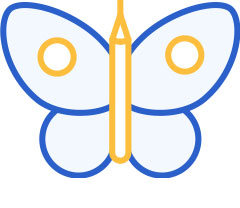Third grade is such an important year and a lot of fun. What does a
typical day in our classroom look like? If you could peer in at any
moment, what would you see us up to? Here is a small snapshot of what
our days might look like... enjoy!
8:10- Students enter
the classroom. They sign in on our Smartboard and then get their iPad
to work on ST math (Play Gigi- as many of them refer to it!). We are
loving this program as it helps us practice math concepts and builds our
problem-solving skills. Mrs. Adams checks in with students on their
progress and then often pull individuals or small groups to the back
table to work for a few minutes.
8:35-
We gather at the front carpet for a quick morning meeting. This often
includes a handshake or greeting of some type, the pledge, our rules and
gestures, a morning letter from Mrs. Adams, and announcements. We
also sometimes share special information, websites, and activities at
this time
8:45- It is the start of our literacy block.
Mrs. VerMeer joins us at this time. We have a whole group mini-lesson
that focuses on Common Core reading skills and strategies. Then we
break into literacy rotations. Students can be found independently
listening to reading, working on word work, reading to self, and
listening to reading. Mrs. VerMeer, Mrs. Hansmeier, and myself keep
busy pulling small groups of students into guided reading groups and
working with individuals. After our first round, we have another short
literacy mini-lesson, and then students pick their second rotation. It
is fun to see a classroom full of readers and writers hard at work.
10:15-
It is writing time. We review language skills and editing writing on
the Smartboard using our daily packets. Then it is time for a short
writing craft lesson or language lesson. We then practice those skills
in our own writing.
10:50- Yeah! It is recess and time to run and give our brains a break! We always hope for nice weather.
11:20-
After some quick bathroom and drink breaks, we return to our room. We
enjoy listening to our read aloud book at this time and also some days
work on our working memory activities.
11:45- Lunch Time!
12:15-
The next half hour is devoted to our Cadet Intervention Time. It is a
time where we have identified students who may need extra help and group
them to meet their needs. All students are working on some type of
literacy activities at this time and it sometimes feels like we have
kids going everywhere! Some students meet with other teachers during
this time. Students who stay in my room may be working on reading
skills in a small group with me, they may be working on SRA reading
cards with the goal to practice being independent learners who read
directions carefully, or they may be found in Ms. Leifeld's or Mrs.
Timp's room modeling good reading with kindergarten partners while
practicing their reading fluency. The half hour goes really fast!
12:50-
It is time for exploratory classes. On Mondays you will find us
running in the high school gym with Mr. Slifka. Tuesday we are busy
learning about research skills and checking out books with Mrs.
Shekelton in the library. Wednesday brings Mrs. Vandervort to our room
with the goal to teach students about being digital citizens during
technology time. On Thursday we head down the hall to visit Mrs. Ortner
in the art room, and on Fridays we can be heard playing our recorders
in music class with Mr. Bieber.
1:35- We head back to
the classroom, to focus on math. We start math with a whole group
lesson and then break into our math rotations. Small groups meet with
Mrs. Adams while other students work in their math folders, play math
games, practice math concepts on our iPads, and practice our facts.
2:45-
The end of the day is fast approaching, so we need to sneak in some
science or social studies time. I love having it at the end of the day
as it is so easy to hook student interest in those areas! In third
grade we study animal and plant populations, force and motion, and
weather. We also study communities, geography, and introduce American
history for our social studies curriculum. Our schedule changes a bit
on Wednesdays. Every other week we have a guidance lesson. The other
Wednesday is devoted to STEM. Our STEM activities include introducing
coding, engineering projects, and STEM problem-solving challenges.
3:20-
We are quickly wrapping up our day and getting ready to head home. We
end the day with announcements, cleaning up, and handshake or hug for
Mrs. Adams as we exit the classroom. Our days fly by!
























































